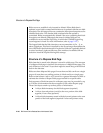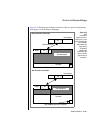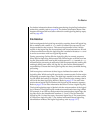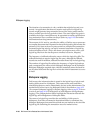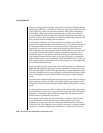
2-154 IBM Informix OnLine Database Server Administrator’s Guide
Logical Log Files
This same unlikely scenario could occur during the rollback of a long trans-
action even after the LTXEHWM is reached. (Refer to page 2-158 for more
details about the long transaction exclusive high-water mark.) After the
LTXEHWM is reached, and after all processes have exited critical sections,
only the database server process that is performing the rollback has access to
the physical and logical logs. However, if many processes were in critical
sections, and if the space remaining in the physical log were very small at the
time the LTXEHWM was reached, it is conceivable that the writes performed
as user processes completed their processing could fill the physical log
during the rollback.
Logical Log Files
The function of the logical log is to store a record of changes to OnLine data
since the last OnLine archive. OnLine manages the logical log as three or
more separate allocations of disk space, each of which is referred to as a
logical log file. Each logical log file is associated with a unique identification
number.
Refer to page 3-13 for a listing of logical log administration topics.
Fast Recovery and Data Restore
The logical log records can be applied to the OnLine system to recover all
transactions that occurred since the most-recent point of known physical
consistency. The point of known consistency in an OnLine database server
system is called a checkpoint. The logical log records are used in the second
phase of fast recovery when OnLine returns the entire system to a state of
logical consistency up to the point of the most-recent logical log record.
For further information about the role of the logical log in fast recovery, refer
to page 4-39. For further information about checkpoints, refer to page 2-70.
For further information about how to display the logical log records, refer to
page 7-51.
Backup tapes of the logical log files can be combined with the most-recent
OnLine archives to re-create the OnLine system up to the point of the most-
recent logical log record.



